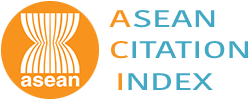การศึกษาการผลิตชางวงตาลพร้อมดื่มผสมสมุนไพรเพื่อสุขภาพ
คำสำคัญ:
งวงตาล, ชาพร้อมดื่ม , สารสกัดหญ้าหวาน, ใบเตยบทคัดย่อ
วัตถุประสงค์และที่มา : งวงตาลเป็นสมุนไพรท้องถิ่นในจังหวัดเพชรบุรีที่มีประโยชน์ต่อสุขภาพโดยคนในท้องถิ่นนิยมบริโภคในรูปแบบชาร้อนซึ่งต้องสิ้นเปลืองเวลาในการเตรียม จึงเห็นแนวทางในการพัฒนาเป็นชาพร้อมดื่มซึ่งเป็นผลิตภัณฑ์ที่ได้รับความนิยมบริโภคกันอย่างแพร่หลายเนื่องจากสะดวกต่อการบริโภค ให้ความสดชื่น ดังนั้นงานวิจัยนี้มีวัตถุประสงค์เพื่อ 1. ศึกษาการพัฒนาผลิตภัณฑ์ชางวงตาลพร้อมดื่มเสริมสมุนไพรโดยใช้สารให้ความหวานคือ สารสกัดหญ้าหวาน 2. ศึกษาคุณภาพด้านกายภาพ องค์ประกอบทางเคมี คุณภาพทางจุลินทรีย์ และคุณค่าทางโภชนาการของผลิตภัณฑ์ชางวงตาลพร้อมดื่มเสริมสมุนไพร
วิธีดำเนินการวิจัย : ศึกษาความหวานจากสารสกัดหญ้าหวานที่เหมาะสมของชางวงตาลพร้อมดื่มจำนวน 5 ระดับ ได้แก่ ร้อยละ 0, 0.01, 0.02, 0.03 และ 0.04 (w/v) ตามลำดับ คัดเลือกความหวานเพียง 1 ระดับ ที่ผู้บริโภคยอมรับมากที่สุด จากนั้นนำไปพัฒนาเป็นชาพร้อมดื่มเสริมสมุนไพร จำนวน 3 ชนิด ได้แก่ เก๊กฮวย ใบเตย และอัญชัน โดยศึกษาอัตราส่วนของปริมาณงวงตาลต่อสมุนไพรเป็น 90:10, 80:20 และ 70:30 (w/w) ตามลำดับ คัดเลือกปริมาณและชนิดของสมุนไพรที่ผู้บริโภคให้การยอมรับมากที่สุด 1 ชนิด เพื่อศึกษาการยอมรับผลิตภัณฑ์ชางวงตาลพร้อมดื่มเสริมสมุนไพร คุณภาพด้านกายภาพ องค์ประกอบทางเคมี คุณภาพทางจุลินทรีย์ และคุณค่าทางโภชนาการพร้อมฉลากผลิตภัณฑ์
ผลการวิจัย : การคัดเลือกระดับความหวานของการเติมสารสกัดหญ้าหวานเท่ากับ ร้อยละ 0.03 (w/v) จากนั้นนำมาผลิตเป็นผลิตภัณฑ์ชางวงตาลพร้อมดื่มเสริมสมุนไพร 3 ชนิด พบว่า สูตรที่ได้รับการยอมรับจากผู้บริโภคสูงที่สุด คือ สูตรเสริมใบเตย ที่อัตราส่วน 90:10 (w/w) ผลิตภัณฑ์ชางวงตาลพร้อมดื่มเสริมใบเตยมีคุณภาพทางกายภาพ เคมี และคุณภาพทางจุลินทรีย์ได้มาตรฐานตามประกาศกระทรวงสาธารณสุข (ฉบับที่ 356) พ.ศ.2556 เรื่อง เครื่องดื่มในภาชนะบรรจุที่ปิดสนิท ทำการตรวจสอบคุณค่าทางโภชนาการ พบว่า ชางวงตาลพร้อมดื่มเสริมใบเตยเป็นเครื่องดื่มที่ไม่ให้พลังงาน เหมาะสำหรับคนรักสุขภาพ ผลการศึกษาการยอมรับของผู้บริโภคต่อผลิตภัณฑ์พบว่า ผู้บริโภคให้การยอมรับร้อยละ 97 ตัดสินใจซื้อรับประทานหากมีผลิตภัณฑ์นี้ออกวางจำหน่าย คิดเป็นร้อยละ 71 และคิดว่าราคาที่เหมาะสมของผลิตภัณฑ์ชางวงตาลพร้อมดื่มเสริมสมุนไพร ควรมีราคา 25 บาท/500 มล. คิดเป็นร้อยละ 60
สรุปผลการวิจัย : ชางวงตาลพร้อมดื่มที่ระดับความหวานจากสารสกัดหญ้าหวาน ร้อยละ 0.03 (w/v) เสริมใบเตยที่อัตราส่วน 90:10 (w/w) ได้รับการยอมรับจากผู้บริโภคสูงที่สุด เป็นผลิตภัณฑ์ที่ไม่ให้พลังงาน และอุดมไปด้วยสารต้านอนุมูลอิสระเหมาะกับผู้รักสุขภาพ และเป็นผลิตภัณฑ์ที่สะดวกต่อการบริโภค
เอกสารอ้างอิง
AOAC. (2019). Official Methods of Analysis of AOAC International. (21st ed.), Washington DC.: The Association of Official Analytical Chemists Inc.
AOAC. (2000). Official Methods of Analysis of AOAC International. (17th ed.), Washinton DC.: The Association of Official Analytical Chemists Inc.
Chirinang, P., Wattananapakasem, I., Prattanaruk, C., Intanin, J., & Nawong, S. (2022). Extraction process and chemical compositions of Borassus flabellifer L. male flowers crude extracts. The 10th CAS National and International Conference 2022 (CASNIC 2022). Khonkhen, Thailand: 1775-1787.
Chirinanga, P., Wattananapakasem, I., Prattanaruk, C., Intanin, J., & Nawong, S. (2023). Chemical composition and inhibitory activities against α-Amylase and α-glucosidase of palmyra palm in Borassus flabellifer L. male flowers extracts. Journal of Science and Technology Mahasarakham University, 42(3), 127-136.
Chirinangb, P., Wattananapakasem, I., Prattanaruk, C., Intanin, J., & Nawong, S. (2023). Study on chemical composition and antioxidant properties of extract and tea from Borassus flabellifer L. male flowers by synchrotron-FTIR microscopy technique. In Proceeding The 1st International Academic Conference 2023: (TRU IAC 2023) Research and Innovation for Sustainable Social and Development. (pp.13). Thailand: Thepsatri Rajabhat University.
Chompreeda, P. (2007). Sensory evaluation and consumer acceptance. Bangkok: Kasetsart Universit. (in Thai)
Dudonne, S., Vitrac, X., Coutiere, P., Woillez, M., & Merillon, J.M. (2009). Comparative study of antioxidant properties and total phenolic content of 30 plant extract of industrial interest using DPPH, ABTS, FRAP, SOD and ORAC assays. Journal of Agricultural and Food Chemistry, 53, 1768-1774.
Gandhi, S., Gat, Y., Arya, S., Kumar, V., Panghal, A., & Kumar, A. (2018). Natural sweeteners: health benefits of stevia. Foods and Raw Materials, 6(2), 392-402.
Hosseini, S., Goli, S.A.H., & Keramat, J. (2015). Production and characterization of low-calorie orange nectar containing stevioside. Journal of Food Science and Technology, 52(10), 6365-6374.
Jirarattanarangsri, W., & Budprom, P. (2017). Effect of different processing on phenolic content, anthocyanin content, antioxidant capacity and consumer acceptance of black glutinous rice leaf tea. Srinakharinwirot University (Journal of Science and Technology), 9(17), 91-103.
Linda, S.MO., Samuel, S.M.S., & Vincent, E.C.O. (2004). Purification and characterization of a new antiviral protein from the leaves of Pandanus amaryllifolius (Pandanaceae). Department of Biology. The Chinese University of Hong Kong, Shatin, N.T., Hong Kong, China.
Lu, X., Wang, J., Al-Qadiri, H. M., Ross, C. F., Powers, J. R., Tang, J., & Rasco, B. A. (2011). Determination of total phenolic content and antioxidant capacity of onion (Allium cepa) and shallot (Allium oschaninii) using infrared spectroscopy. Food Chemistry, 129(2), 637- 644.
Manosroi, J., Saowakon, S., & Manosroi, A. (2000). Stevia. In Proceeding The Second National Seminar on Pharmaceutical Biotechnology. (pp.60-70). Thailand: Chiang Mai University.
Marghitas, L. A., Stanciu, O. G., Dezmirean, D. S., Bobis, O., Popescu, O., Bogdanov, S., & Campos, M. G. (2009). In vitro antioxidant capacity of honeybee-collected pollen of selected floral origin harvested from Romania. Food Chemistry, 115(3), 878–883.
Megeji, N.W., Kumar, J.K., Singh, V., Kaul, V.K., & Ahuja, P.S. (2005). Introducing Stevia rebaudiana, a natural zero-calorie sweetener. Current Science, 88(5), 801-804.
Misra, H., Soni, M., Silawat, N., Mehta, D., Mehta, B. K., & Jain, D. C. (2011). Antidiabetic activity of medium-polar extract from the leaves of Stevia rebaudiana Bert. (Bertoni) on alloxan-induced diabetic rats. Journal of Pharmacy and Bioallied Science, 3(2), 242-248.
Nooron, N. (2010). Hypoglycemic effect of Pandanus amaryllifolius Roxb. Leaf extract. Master degree of Science Program in Clinical Biochemistry and Molecular Medicine. Chulalongkorn University. (in Thai)
Rassameethammawong, P. (1994). Palmyra palm: Plant inheritance from ancestors, source of job creation, life creation. Bangkok: Phetkarat. (in Thai)
Rocha, I.F.D.O., & Bolini, H.M.A. (2015). Passion fruit juice with different sweeteners: Sensory profile by descriptive analysis. Food Science and Nutrition, 3(2), 129-139.
Srithoklin, L. (1998). Product development of bottled pasteurized Pandan Leaf juice. Quality assurance project, Product development Division, Faculty of Agro-Industry, Kasetsart University, Bangkok, Thailand. (in Thai)
Suttajit, M., Apisariyakul, A., Paupanasok, R., Teekachunhatean, S., Manosroi, A., Manosroi, J., Suttajit, S., Buddhasukh, D., & Vinitketkumnuen, U. (1997). Stevia and Stevia products safety and consumption. Chiang Mai: Science and Technology Research Institute, Chiang Mai University. (in Thai)
Terao, J. (1999). Dietary flavonoids as antioxidants in vivo: conjugated metabolites of (-)-epicatechin and quercetin participate in antioxidative defense in blood plasma. Journal of Medical Investigation, 46(3/4), 159-168.
Wafaa, B., Said, B., & Mohamed, B. (2010). Antidiabetic medicinal plants as a source of alpha glucosidase inhibitors. Current Diabetes Reviews, 6(4), 247-254.
ดาวน์โหลด
เผยแพร่แล้ว
รูปแบบการอ้างอิง
ฉบับ
ประเภทบทความ
สัญญาอนุญาต
ลิขสิทธิ์ (c) 2024 คณะวิทยาศาสตร์ มหาวิทยาลัยบูรพา

อนุญาตภายใต้เงื่อนไข Creative Commons Attribution-NonCommercial-NoDerivatives 4.0 International License.
Burapha Science Journal is licensed under a Creative Commons Attribution-NonCommercial-NoDerivatives 4.0 International (CC BY-NC-ND 4.0) licence, unless otherwise stated. Please read our Policies page for more information




